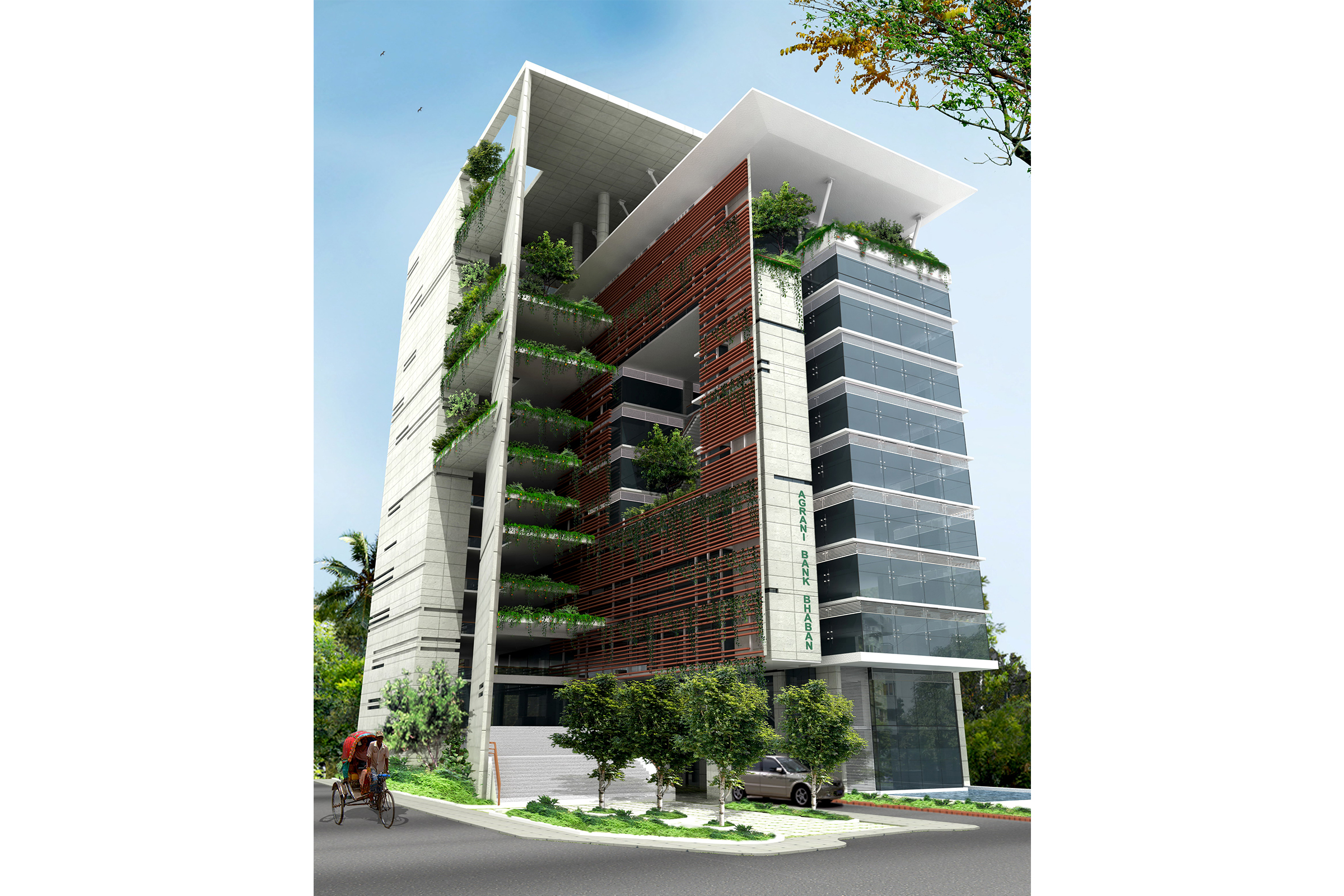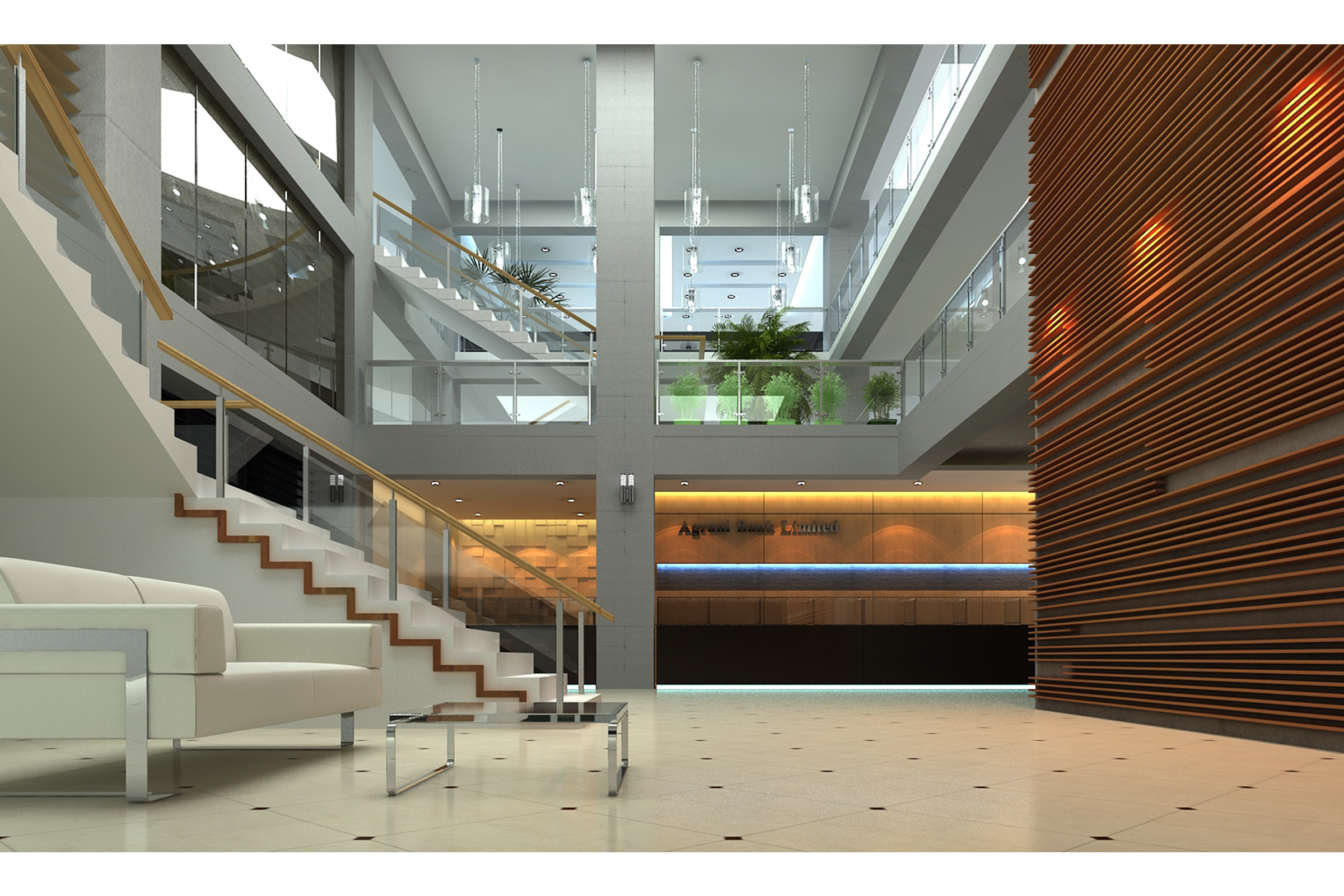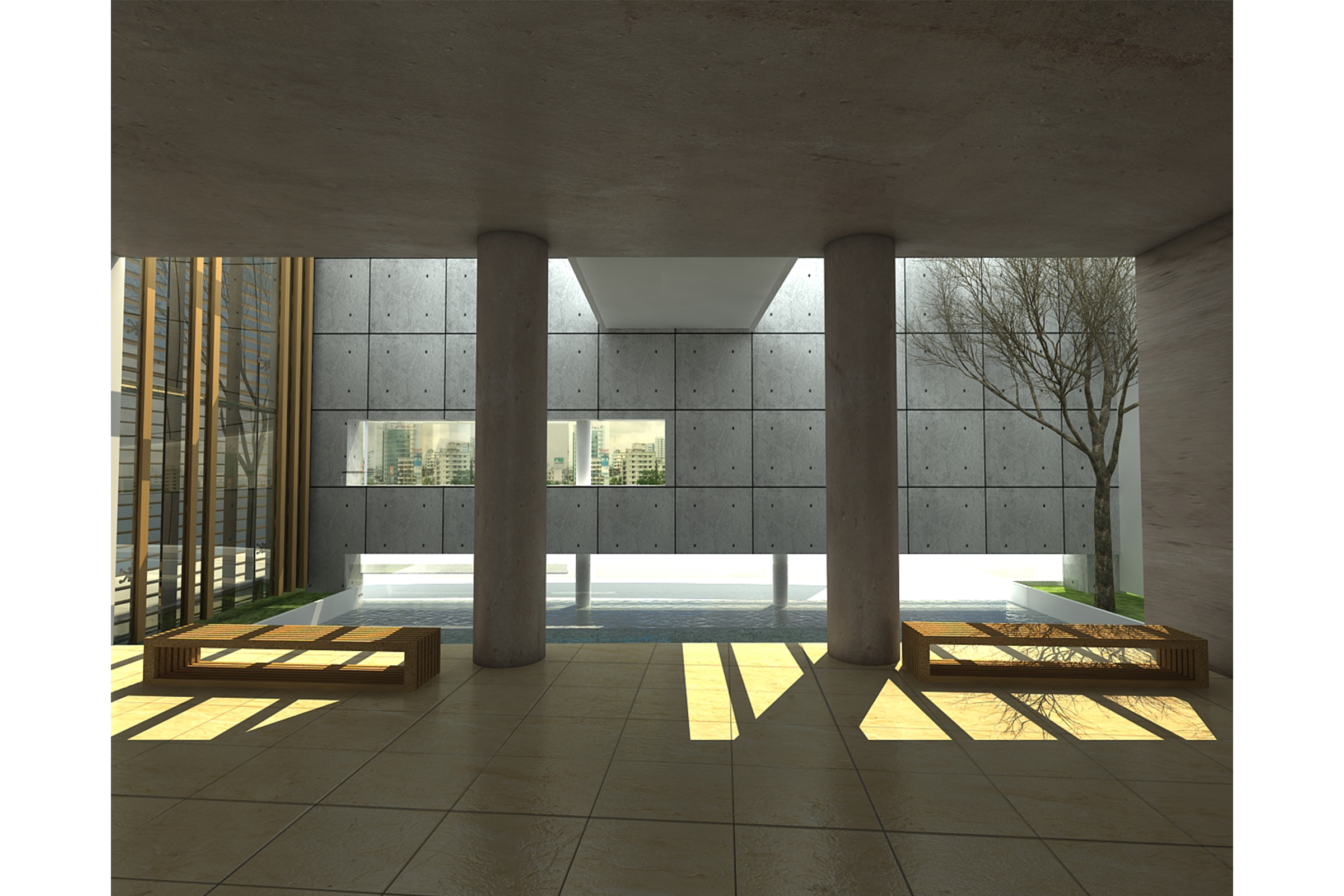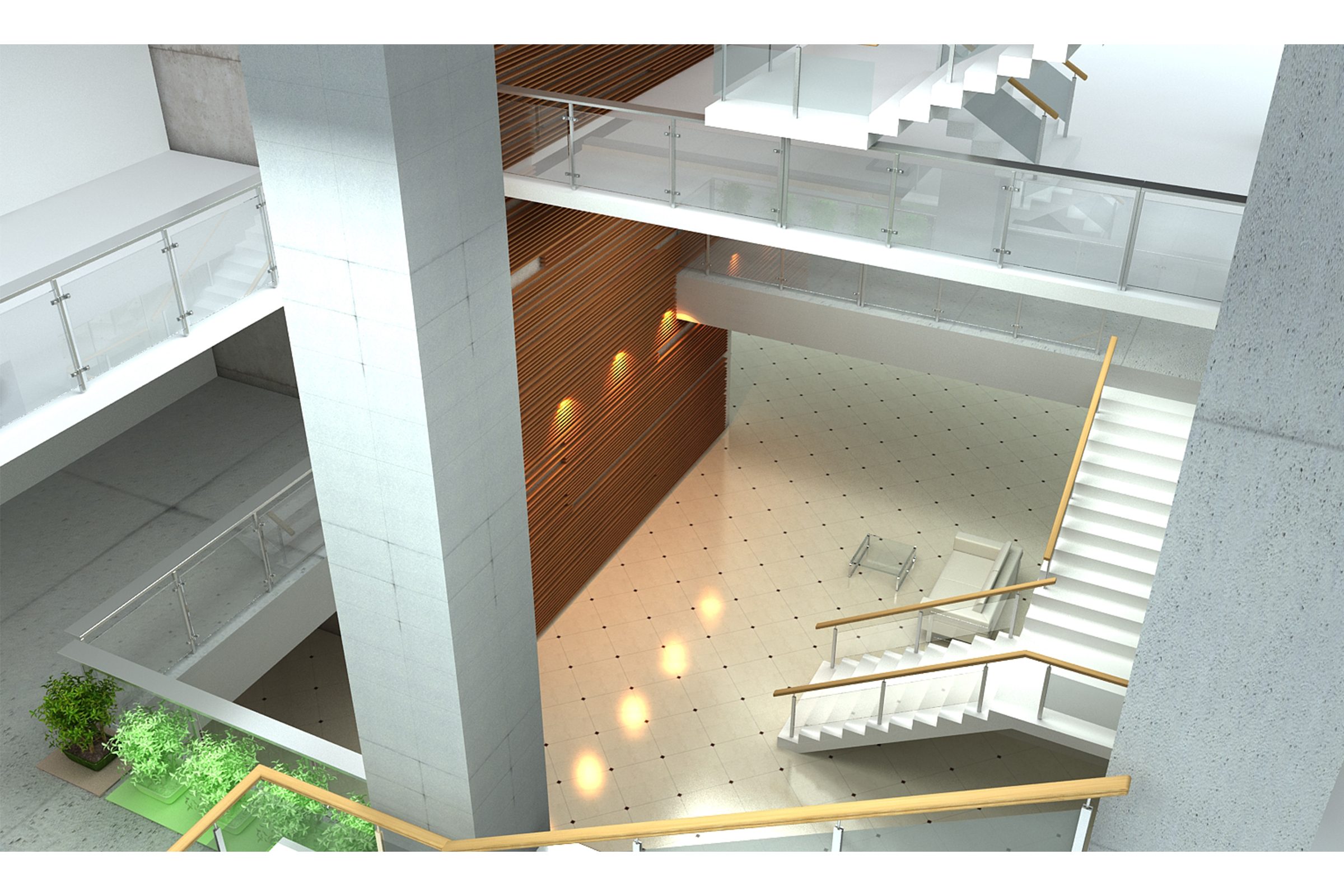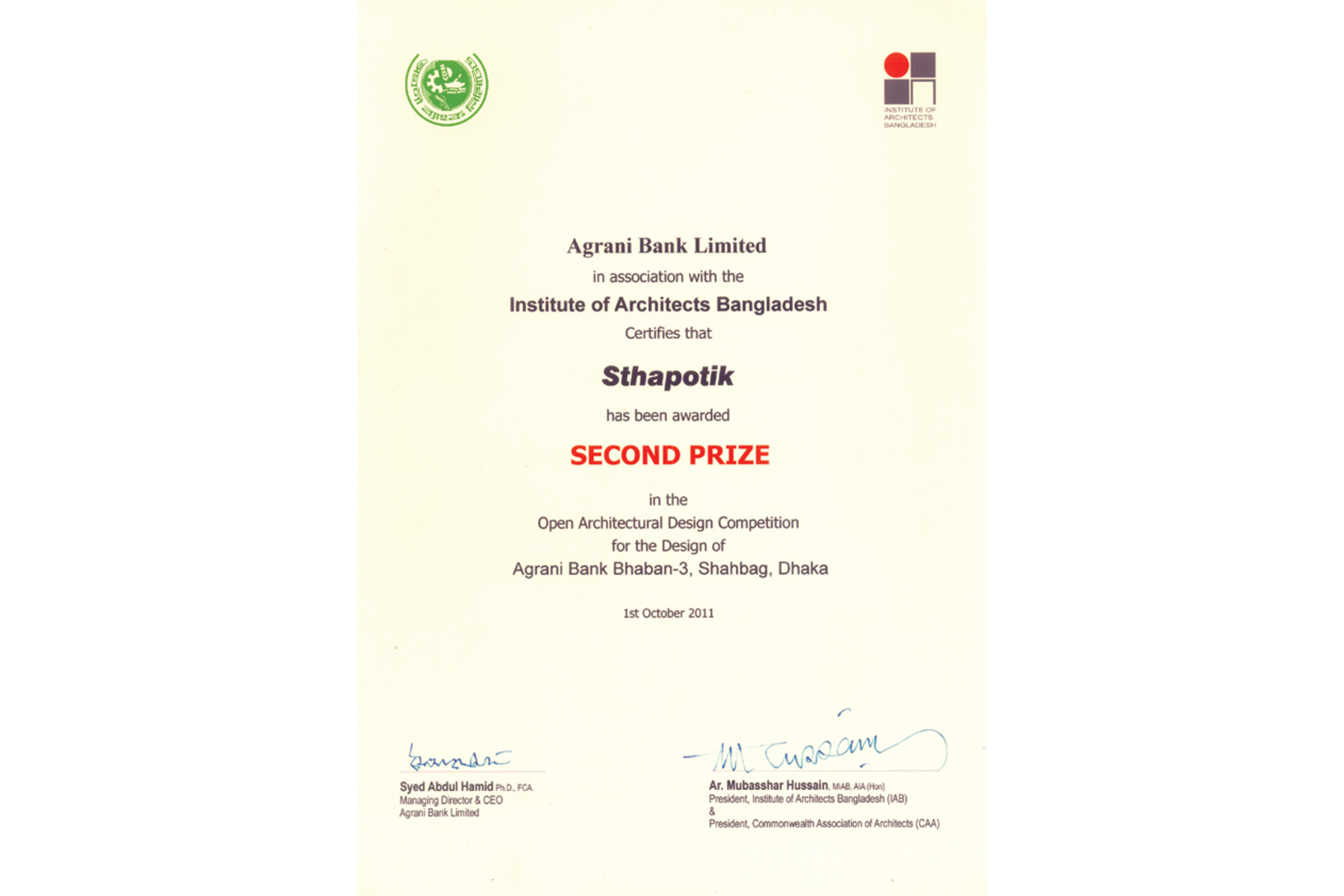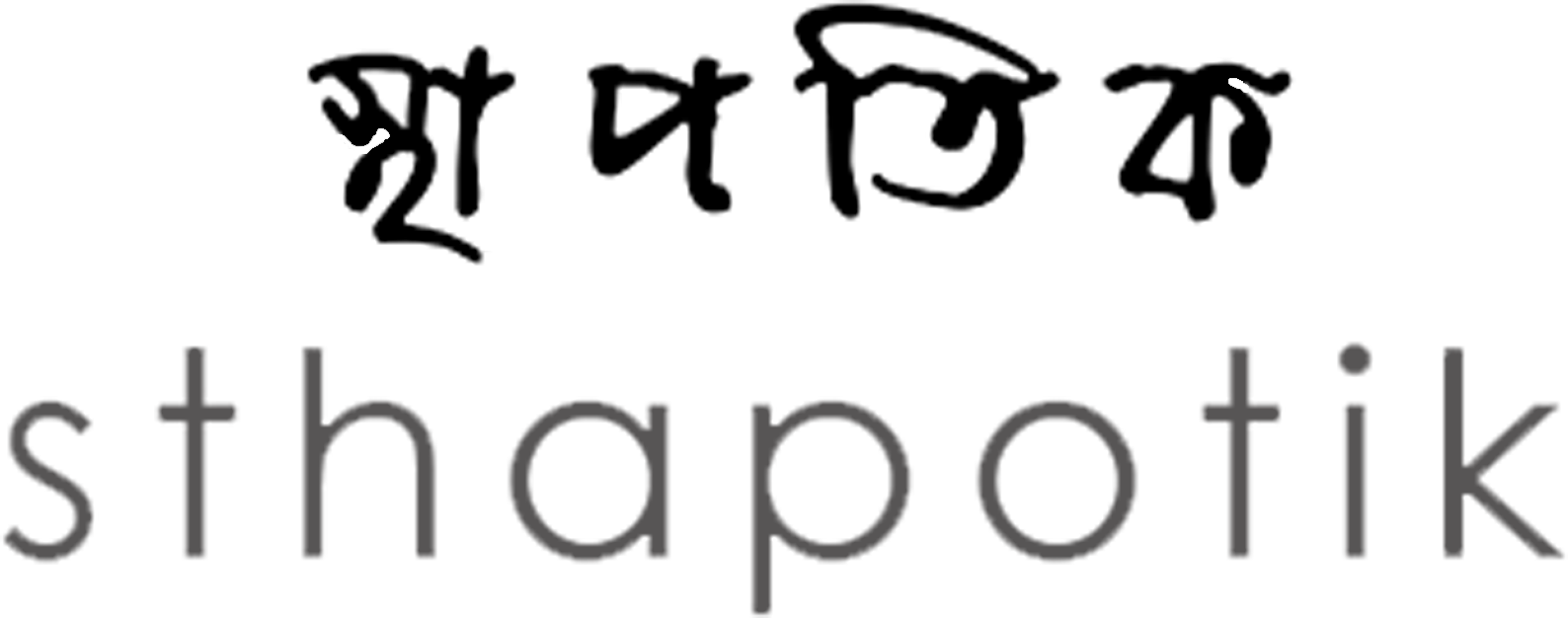AGRANI BANK BHABAN-3
SHAHBAGH, DHAKA
2011
The Design of Agrani Bank Bank Bhaban-3 Competition was arranged jointly by Agrani Bank Limited and IAB in 2011. Shapotik came in the second position among 45 other participants.
“Transforming Bengali archetype in an urban context”.
The design concept is derived from the essence of the “Bengali Rural house form”, which contains a clear spatial sequence for public & private functions. In this office design, the objective is to establish this spatial hierarchy laterally & vertically. The basic considerations included the public part containing the core area as the stair, lift lobby and toilet zone which are grouped and located on the west side. The lobby area act as the court as it is the transition between the public & private and performs as a platform for interaction & source of openness. The private zone is placed after the office. Within the offices’ the vertical sequence of the public to private is also maintained as the Branch office is at ground level and the head office is at the top. The chronological sequence of functionality arranges different departments from bottom to top from public to private. A visual-spatial quality between the Branch, Zonal, Circle, Executive and different levels of head office and also other supporting facilities is maintained in the process. In the Private block (Office Block) we have created double or Triple heightened volume to combine different tires of offices according to ranks to enrich the office environments as well as to provide visual control.
The site is located in a green belt area of Dhaka, especially the northeast side. On the other hand, the southwest side is a concrete jungle. For this, the design provides vertical afforestation to blend with the site surroundings. The site is north-south elongated, due to the adjacent road the west is open and the node is on the southwest corner. According to these considerations, the public part on the west side incorporates easy public excess and also controls the west side heat. And the Private part is placed on the east side. From the node, an aperture with vertical afforestation respects the site force (node) and keeps the lift lobby area naturally ventilated. This volume will also create an inviting approach for the street passers and the entry plaza made breathing for the passerby. A louvre screen wall with green creepers is placed on the west side with the private zone which reduces the heat gain and also makes the building appear intimate.
The building has been designed to align with the sight lines on the North-south orientation. The tranquil and inviting plaza created between the two blocks acts as a transition space for a person just arriving at his workplace from his adobe. Moreover, the Transition space (court) shall be the place where the employee shall interact during their free time.
Design spaces around basic human needs, ancient preferences, and Connections to the patterns of nature and the mind. The workspace gets maximum natural light thus reducing the usage of artificial light and saving energy due to the extensive use of insulated glass as a building façade. Visual contact is also established with nature and the surrounding which helps in the reduction of work-related stress. The public zone is designed to have natural ventilation thus reducing the load of the air-conditioned and the private zone (office block) is provided with mechanical solutions.
A composite structural system is provided and all floors are solved by post lintel system. This top roof is solved by a steel structure supported by R.C.C Columns and Shear walls with some steel Posts. Steel and Teflon provide some tent structures on the top floor. The multipurpose floor (10th) is a column-free space and after that, the 11th floor is supported by a walking column erected from a heavy arch-type beam.
There
are some considerations that are significant in the design are the zoning of
the building blocks, Vertical afforestation for better ventilation and less
consumption of heat, and Maneuverings
airflow through the layers to reduce the
amount of latent heat on the glass surface, the use of a coherent range of
noble materials – both traditional (brick, concrete, wood, natural stone paves
etc.) and contemporary (glass, Teflon, metal) and Concrete for its resource efficiency,
durability, minimal waste production, minimal reflectivity and thermal mass.
